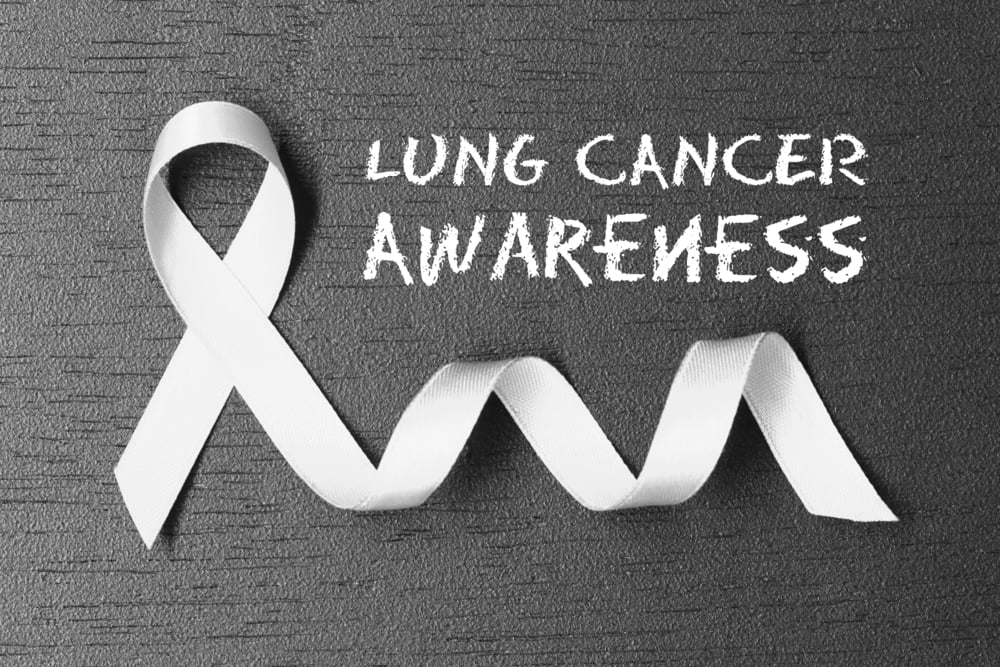Lung Cancer: What Do You Need to Know?
Did you know that lung cancer is the leading cause of cancer death? According to the American Cancer Society, lung cancer accounts for 25 percent of all cancer deaths—and causes more deaths than breast, colon, and prostate cancer combined.
In 2020, the American Cancer Society estimates that doctors will diagnose about 228,820 new cases of lung cancer, and 135,720 Americans will die from the disease.
If you find these statistics startling, keep reading to find out what you need to know about lung cancer, including:
- The Warning Signs
- How It Is Diagnosed
- How It Is Treated
- How to Prevent Lung Cancer
Related Topics (ads):

Warning Signs
Lung cancer occurs mostly in older people over the age of 65, with the average age for a diagnosis at 70. However, this doesn’t mean that you don’t have to be concerned about lung cancer if you’re younger than 65. A small number of people under the age of 45 are diagnosed with the disease each year.
Since symptoms generally don’t appear until the disease has already spread throughout the lungs, it’s important to know the warning signs. These include:
- A Constant Cough
- Chest Pain That Gets Worse When Coughing, Breathing Deeply, or Laughing
- Wheezing
- Shortness of Breath
- Reoccurring Bronchitis, Pneumonia, or Other Infections
- Coughing Up Blood
- Loss of Appetite
- Feeling Weak and Tired
If the disease is not diagnosed quickly, it can spread to other parts of the body. A few of the symptoms of advanced lung cancer are:
- Changes to the Nervous System (such as poor balance or seizures)
- Lumps Near the Surface of the Body
- Jaundice
- Bone Pain
Diagnosing Lung Cancer
Lung cancer is often diagnosed through imaging tests that use x-rays, sound waves, magnetic fields, or radioactive substances to create images of the inside of your body. They can be performed before and after a diagnosis. Imaging tests can:
- Look for Cancer in Suspicious Areas
- Determine How Far the Cancer Might Have Spread
- Determine If a Treatment is Working
- Look for Possible Signs of a Reoccurrence After Treatment
If your doctor suspects that you might have lung cancer, they may order an array of imaging tests to check for growths and a lung biopsy. Common imaging tests used to detect the disease include:
- X-Ray: A chest X-ray looks for abnormal masses in your lungs.
- CT Scan: A CT scan is a cross-sectional imaging test and is more detailed than a chest X-ray. It can detect tumors and enlarged lymph nodes.
- MRI Scan: An MRI scan uses radio waves and strong magnets to produce images of your body’s soft tissues. MRI scans can detect the spread of lung cancer to the spinal cord or brain.
- PET Scan: During a PET scan, a radioactive type of sugar (FDG) is injected into the blood. Since cancer cells grow more rapidly than healthy cells, the sugar collects in the cancer cells.
- Bone Scan: A bone scan involves injecting a tiny amount of low-level radioactive material into the blood to see if lung cancer has spread to your bones. PET scans frequently show this as well, so this test isn’t always necessary.
- Bronchoscopy: To check for large tumors and other blockages in the large airways of your lungs, your doctor may order a bronchoscopy. A biopsy is often performed during this procedure.
Treatments
Once a diagnosis is confirmed, your doctor will tell you which type of lung cancer you have: small cell or non-small cell lung cancer. Treatments vary depending on the type of cancer, and most patients receive more than one type of treatment.
The most common lung cancer treatments include:
- Surgery: Doctors often recommend surgery if you have early-stage or non-small cell lung cancer. During surgery, all or part of your lung may be removed.
- Radiation Therapy: Radiation therapy is used most frequently with chemotherapy to treat the tumor and lymph nodes in the chest of patients with small cell lung cancer. It is also used as a follow-up treatment for patients with non-small cell lung cancer and to keep the cancer from spreading to the brain.
- Chemotherapy: Chemotherapy is a common treatment for both small cell and non-small cell lung cancer. During chemo, drugs are administered through the veins or taken in pill form, enter the bloodstream, and spread throughout your body. Chemo is given in rounds—each followed by a break—and the treatment can last several months.
- Immunotherapy: Immunotherapy is used for patients with either small cell or non-small cell lung cancer for a variety of reasons. It is most commonly used to strengthen the immune system, lessen the symptoms from other types of treatments, or to kill or change the way cancer cells behave.
- Clinical Trials: For patients who are willing to take part in tests to help doctors develop new treatments and procedures, clinical trials are a promising option.
Lung Cancer Prevention Tips
Although many lung cancers can’t be prevented, you can lower your risk of a diagnosis by:
- Avoiding Tobacco
- Avoiding Exposure to Radon
- Avoiding or Limiting Your Exposure to Cancer-Causing Agents
- Eating a Healthy Diet
If you suspect that you may have lung cancer, the first step is to schedule an appointment with your doctor. Since lung cancer is the most common type of cancer among Americans, most doctors are familiar with the warning signs. The earlier lung cancer is diagnosed, the more treatment options you’ll have to fight the disease.